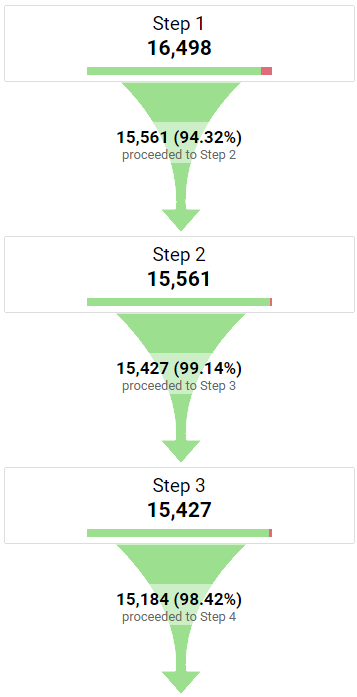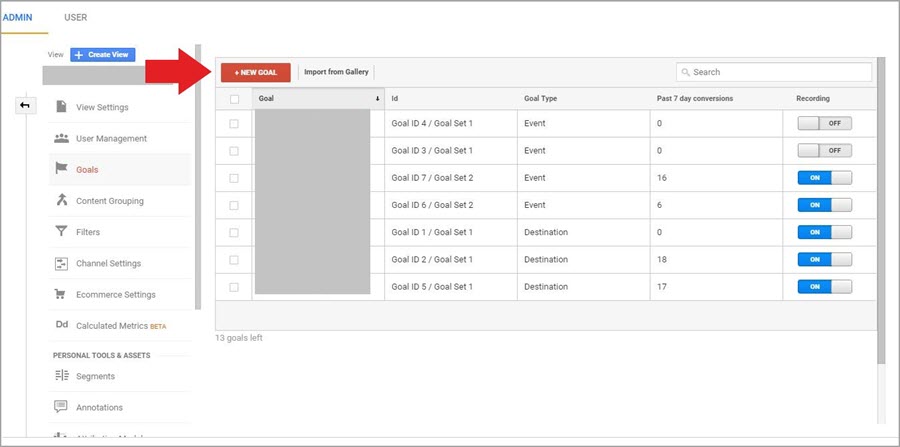Revealing the Blind Destinations: Recognizing What Google Analytics Goals Can not Gauge
In the realm of electronic analytics, Google Analytics stands as an effective tool for monitoring and evaluating on-line customer interactions. Recognizing what Google Analytics goals can not gauge is vital for obtaining an extensive sight of individual actions and engagement.
Individual Behavior on External Operatings Systems
Understanding exactly how customers communicate on external platforms is essential for maximizing on the internet techniques. External systems, such as social media sites networks, referral websites, and on the internet forums, play a substantial role in driving web traffic to a company's site. By examining individual actions on these platforms, companies can acquire important insights right into the effectiveness of their marketing initiatives and the preferences of their target market.
One key aspect of individual behavior on external systems is the reference source. By tracking where the customers are coming from, services can recognize which platforms are driving one of the most traffic to their internet site. This details can aid business allot their resources better, concentrating on the platforms that yield the most effective results.

Offline Conversions and Communications
Examining user actions on outside platforms supplies important insights into on-line methods; nonetheless, considering offline conversions and communications is similarly necessary for a comprehensive understanding of a firm's general efficiency. While Google Analytics excels at tracking on-line interactions, it falls short in catching the complete consumer trip that usually includes offline touchpoints. Offline conversions, such as in-store acquisitions or phone inquiries, play a significant role in lots of companies' success. Overlooking these communications can lead to a distorted view of the effectiveness of advertising and marketing campaigns and general business performance.

Acknowledgment Beyond Last Click
When diving into the world of digital advertising and marketing analytics, it comes to be essential to look beyond the single touchpoint of the last click for a more extensive understanding of acknowledgment. While Google Analytics gives useful insights right into user behavior, counting solely on last-click acknowledgment can be restricting - what data is google analytics goals unable to track. Acknowledgment versions that surpass the last click offer an extra nuanced view of the customer trip, taking into consideration all the touchpoints that bring about a conversion
Attribution past the last click enables marketing professionals to appoint credit to various interactions along the conversion course, providing a more clear image of the performance of different advertising and marketing networks. By discovering multi-touch attribution designs such as direct, time decay, or position-based attribution, businesses can better allot their advertising and marketing budgets and enhance their techniques for optimal influence.
Understanding the influence of each touchpoint in the conversion process is critical for making notified choices and making best use of ROI. By welcoming attribution beyond the last click, services can get much deeper understandings right into customer habits and customize their marketing initiatives better.
Cross-Device and Cross-Browser Tracking

In a similar way, cross-browser tracking matches cross-device tracking by capturing customer habits as they switch in between various her latest blog internet internet browsers. Understanding how users engage with web sites on various browsers can help marketing professionals maximize their on the internet experiences to make sure uniformity and performance throughout different systems.
Qualitative Data and Customer Intent
Recognizing user intent with qualitative information analysis is crucial for developing targeted electronic advertising and marketing strategies that reverberate with the demands and preferences of the target market. Qualitative information gives insights into the 'why' behind individual activities, shedding light on inspirations, feelings, and choices that measurable information alone can not record. By examining individual feedback, comments, and interactions, marketing professionals can reveal valuable info concerning user intent, permitting them to tailor their messaging, web content, and offerings to better line up with what their target market is seeking.
Qualitative information additionally helps in understanding the context in which customers engage with a website or application. This contextual understanding enables marketing professionals to produce even more tailored and relevant experiences, eventually driving greater engagement and conversion rates. By diving into individual intent via qualitative information analysis, services can acquire a deeper understanding of their target audience, leading to much more efficient advertising and marketing approaches that fulfill individuals' needs and expectations.
Conclusion
Finally, Google Analytics objectives have restrictions in gauging user habits on exterior systems, offline conversions, attribution beyond last click, cross-device and cross-browser tracking, and qualitative information connected to customer intent. what data is google analytics goals unable to track. It is necessary for services to be familiar with these unseen areas in order to supplement their information analysis with various other tools and approaches to acquire a more comprehensive understanding of their target market and enhance their general digital advertising and marketing methods
By evaluating user habits on these systems, companies can gain important insights right into the efficiency of their published here advertising and marketing initiatives and the investigate this site preferences of their target audience.
Analyzing user actions on exterior platforms offers important insights right into online strategies; however, thinking about offline conversions and interactions is equally important for a thorough understanding of a company's general performance.In digital advertising and marketing analytics, relocating past last-click acknowledgment to discover cross-device and cross-browser tracking is important for obtaining an all natural understanding of individual communications across various systems and gadgets. By evaluating user comments, remarks, and communications, marketing professionals can discover useful info concerning individual intent, enabling them to customize their messaging, material, and offerings to better line up with what their audience is seeking.
By delving into user intent with qualitative information analysis, businesses can get a much deeper understanding of their target audience, leading to much more efficient advertising and marketing approaches that satisfy customers' assumptions and needs.